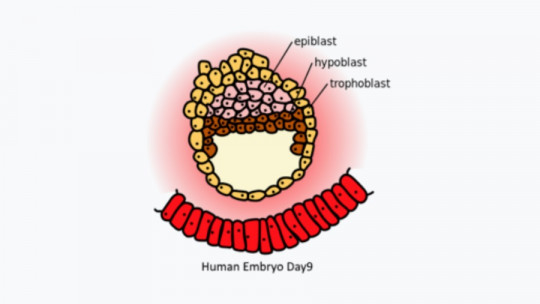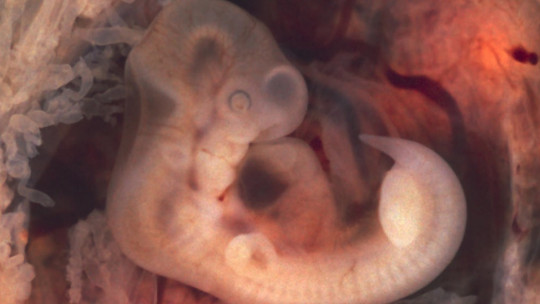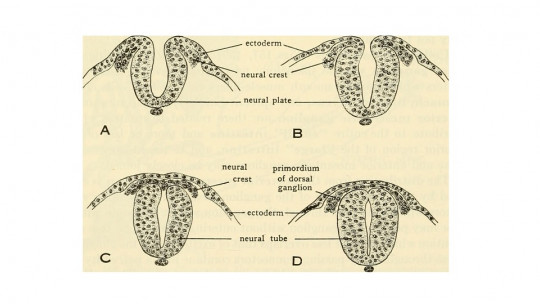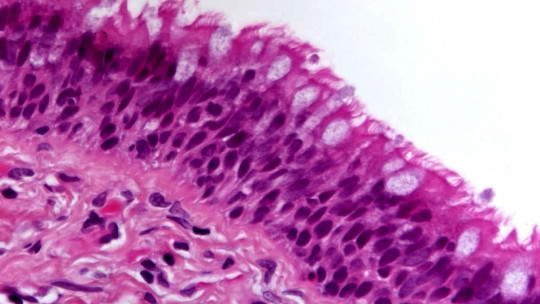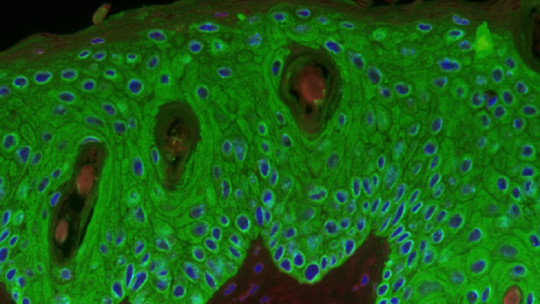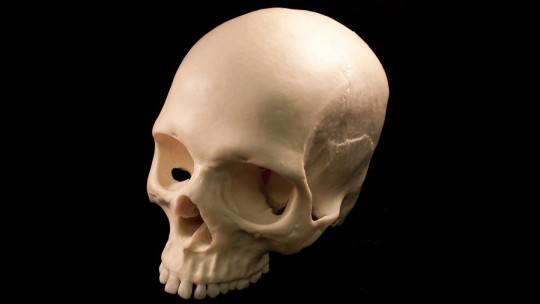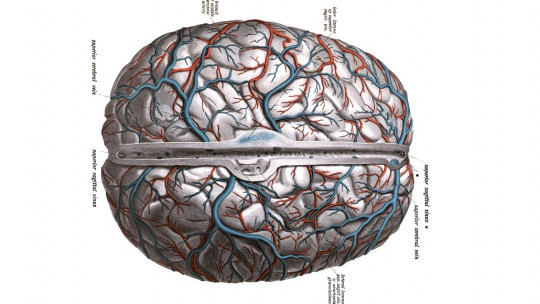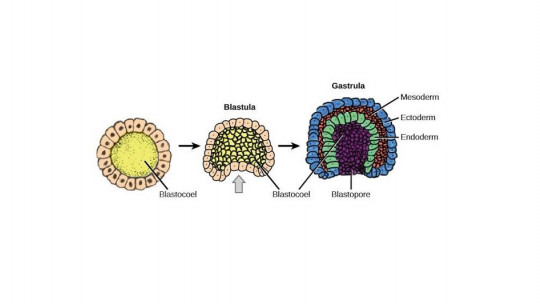
The development and growth of the human body is an extremely complex and fascinating process in which the different structures work with millimeter precision to give rise to the birth of different organs and body systems.
One of these structures is the endoderm, a layer or layer of tissue that we will talk about throughout this article. This layer is one of the oldest biological parts in terms of development and gives rise to important vital organs such as those found in the digestive system.
What is the endoderm?
The endoderm refers to the innermost of the three layers of tissue that develop during embryonic growth of the animals. These strata known as germ layers are the ectoderm, which is the outermost layer, and the mesoderm, or middle layer.
However, it is necessary to specify that not all species have these three germ layers. Depending on each animal group, embryonic cells can derive into two or three layers, forming diblastic and triblastic beings respectively. Even so, they all have the endoderm layer, which is located below the rest.
In the case of the endoderm, it appears around the third week of gestation, being considered one of the oldest layers within the embryonic differentiation process. Besides, It is from this stratum of cells that many vital organs are born for the survival of the adult living being.
From this stratum germinates, most of the most important internal organs will be formed. Some of them are the alveoli that are housed in the lungs, the entire digestive system as well as its secretory glands, the epithelia of some glands such as the thyroid or thymus, and finally some parts of the kidneys, the bladder and the urethra.
How does it develop?
During the beginning of embryonic development, the embryo is made up of a single layer of cells. Next, it folds on itself in a process called gastrulation, thanks to which the first cell layers are born. The first of these layers to appear is that of the endoderm.
Around the second week of pregnancy, a group of migratory cellular organisms glide to the cells of the hypoblast an inner mass made up of cubic cells, and becomes the final endodermal layer.
The next phase in the evolution of the embryo is called organogenesis. This is responsible for producing the corresponding changes in the embryonic layers and giving way to the formation of the appropriate organs and tissues.
As noted above, in the case of the endoderm, this will give rise to different organs of the digestive and respiratory system, as well as the epithelial envelope of some parts of the body. However, it is necessary to specify that these organs are not definitive structures but rather primitive members awaiting complete development.
Types of endoderm
As a result of the differentiation of the embryonic body, the endoderm is divided into two parts that have their own characteristics. These parts are the embryonic endoderm and the extraembryonic endoderm. These two divisions are connected by a wide hole that, later, will become the umbilical cord
1. Embryonic endoderm
The embryonic endoderm is the section of the endodermal layer that will give rise to the internal structures of the embryo, forming the primary intestine. Furthermore, this embryonic stratum works together with the mesodermal layer to form the notochord When this structure is fully developed, it is the main one responsible for emitting the necessary signals to enable cell migration and differentiation; an extremely important process to enable the formation of organic structures such as the brain.
From here, the notochord and the endoderm carry out a parallel development in which the former generates a series of folds that will form the cranial, caudal and lateral axes of the embryo; while the folds of the endoderm remain inside the organism, forming the intestinal tube.
2. Extraembryonic endoderm
The second division of the endoderm is that which remains outside the embryo fforming the well-known yolk sac This membranous annex is connected to the embryo, supplying sufficient nutrients and oxygen, as well as disposing of metabolic waste.
However, this division of embryonic endoderm does not remain until the end of embryonic development but usually disappears around the tenth week of gestation.
Sections of the intestinal tube
In the previous section it was mentioned that the embryonic endoderm gives rise to a structure called the intestinal tube. This structure can be differentiated into different sections that can correspond to both the embryonic and extraembryonic endoderm. These sections are:
1. Cranial intestine
Known as cranial or inner intestine, this structure is located inside the skull of the embryo. During the first stages of development this forms the oropharyngeal membrane, which gradually transforms into the pharynx. The lower boundary then forms a structure known as the respiratory tract.
Finally, the intestinal tube it dilates until it becomes what will finally correspond to the stomach
2. Caudal intestine
Located within the caudal fold it is the precursor of the allantoic membrane An extraembryonic tissue that appears through the formation of folds located next to the yolk sac.
3. Middle intestine
Finally, the midgut is located between the cranial and caudal structures. Its extension dilates until it reaches the yolk sac through the umbilical cord. Thanks to him, the embryo is supplied with sufficient nutrients that come from the maternal organism and allow their correct development.
What organs does it transform into?
It has already been mentioned on multiple occasions that the endoderm is the primitive structure thanks to which a large part of the body’s organs and structures arise, a process known as organogenesis that is, the birth of the organs.
This process of development of the definitive organs usually takes place between calf and the eighth week of management. However, it has been proven that identifiable organs can be observed in people from the fifth week onwards.
To be more specific, These structures derive from the endodermal layer:

